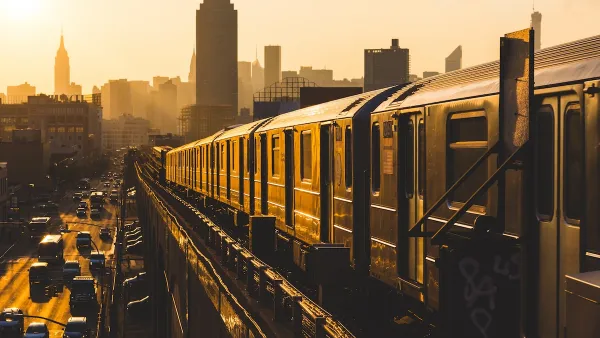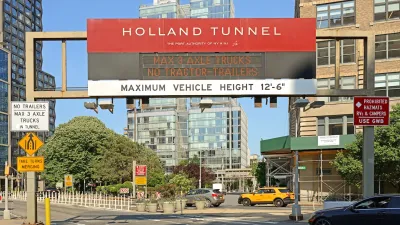The front page photo, "Doomed" on the New York Post on Dec. 4 of pushed subway rider, Ki Suk Han attempting to lift himself from the tracks as a train approaches has captivated many - yet a proposal to prevent it from repeating it is doomed as well.
While the media has questioned whether the New York Post should have published the photo of Ki Suk Han's impending death on the front page, and even questioned the photographer who took the photo, far less attention has been given to measures that could prevent the scenario from repeating - whether the fall on to the tracks is intentional or accidental.
"Seoul's Metro has them, and Paris has been installing them in its aging subway system," writes Dana Rubinstein. Not only does New York's subway not have them - there are no plans to install them even in new stations for the Second Ave. line or extension of the #7 subway, both under construction.
Of course, you need not go to South Korea to experience such safety measures - most airport people movers, often going by the term, AirTrain, including those that service JFK and Newark airports, have them. The platform is separated by doors that only open when a train has arrived, and then they only open to provide access to the train's doors.
"The doors are really the solution to prevent [subway falls] from happening," said Richard Barone, the director of transportation programs for the Regional Plan Association.
Like many capital improvements, it all comes down to cost.
"They’re quite expensive and given the 496 stations, I think that’s the number, it’d be quite prohibitive,” Metropolitan Transportation Authority chairman Joe Lhota, said in March.
Barone argues that it would make sense to install the doors on the new stations on the Second Ave. subway now being built.
M.T.A. spokesman Aaron Donovan said, "Platform edge doors are not currently planned for the new stations on the Second Avenue Subway or the 7 extension. They would present operational challenges and incur long-term maintenance funding costs."
Subway riders will have to continue to do what most know they should always be doing - remaining vigilant on subway platforms. But, if a rider should experience what Ki Suk Han did on Dec. 03, and is unable to get off the tracks, with or without the help of fellow passengers, what should one do? Rubenstein asks the Metropolitan Transportation Authority for advice.
FULL STORY: No Seoul-style platform doors for NY subways

Maui's Vacation Rental Debate Turns Ugly
Verbal attacks, misinformation campaigns and fistfights plague a high-stakes debate to convert thousands of vacation rentals into long-term housing.

Planetizen Federal Action Tracker
A weekly monitor of how Trump’s orders and actions are impacting planners and planning in America.

In Urban Planning, AI Prompting Could be the New Design Thinking
Creativity has long been key to great urban design. What if we see AI as our new creative partner?

Massachusetts Budget Helps Close MBTA Budget Gap
The budget signed by Gov. Maura Healey includes $470 million in MBTA funding for the next fiscal year.

Milwaukee Launches Vision Zero Plan
Seven years after the city signed its Complete Streets Policy, the city is doubling down on its efforts to eliminate traffic deaths.

Portland Raises Parking Fees to Pay for Street Maintenance
The city is struggling to bridge a massive budget gap at the Bureau of Transportation, which largely depleted its reserves during the Civd-19 pandemic.
Urban Design for Planners 1: Software Tools
This six-course series explores essential urban design concepts using open source software and equips planners with the tools they need to participate fully in the urban design process.
Planning for Universal Design
Learn the tools for implementing Universal Design in planning regulations.
Gallatin County Department of Planning & Community Development
Heyer Gruel & Associates PA
JM Goldson LLC
City of Camden Redevelopment Agency
City of Astoria
Transportation Research & Education Center (TREC) at Portland State University
Jefferson Parish Government
Camden Redevelopment Agency
City of Claremont





























